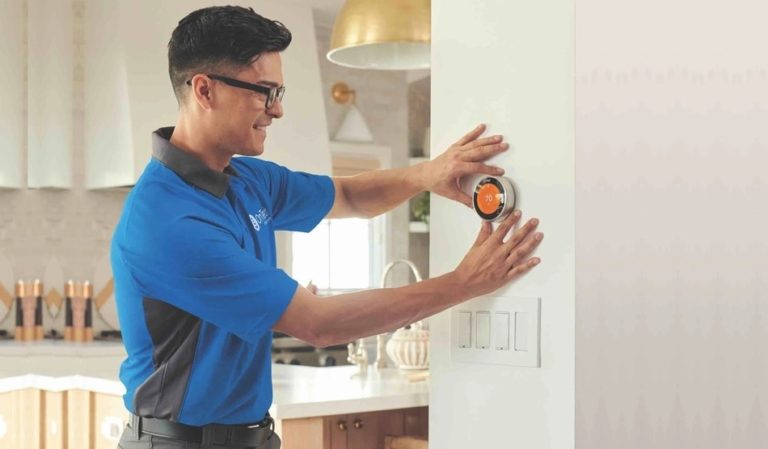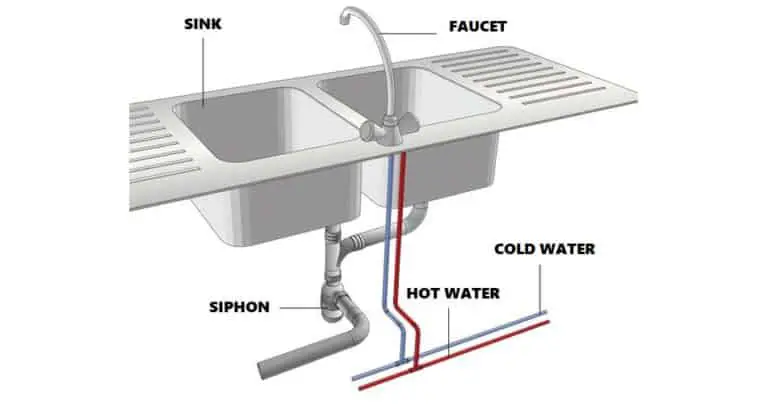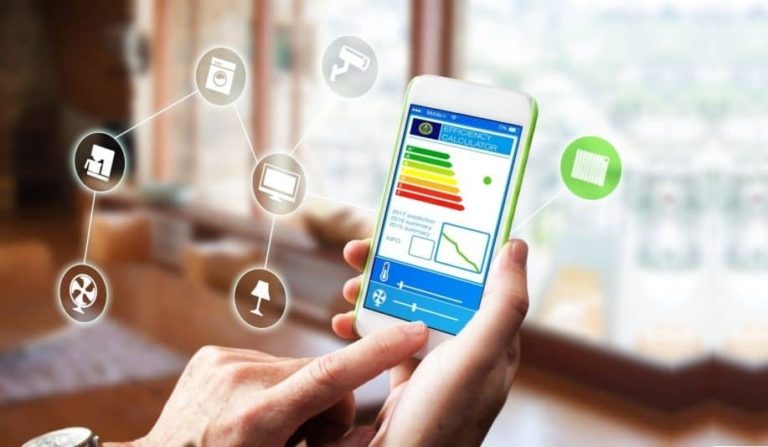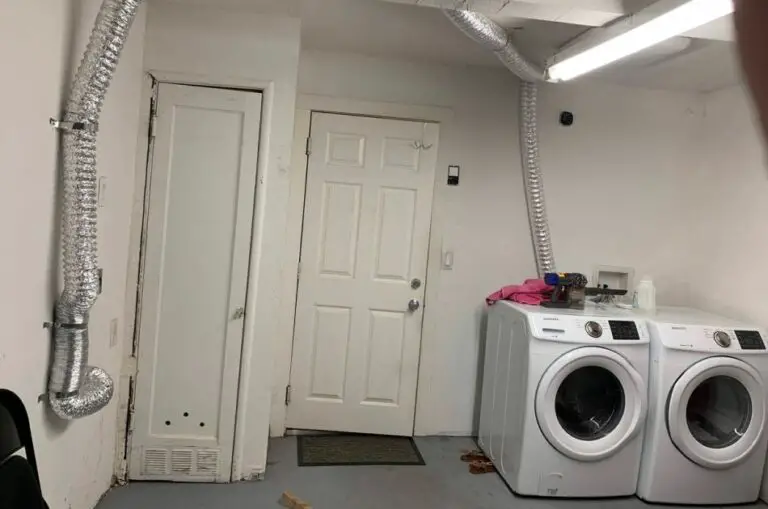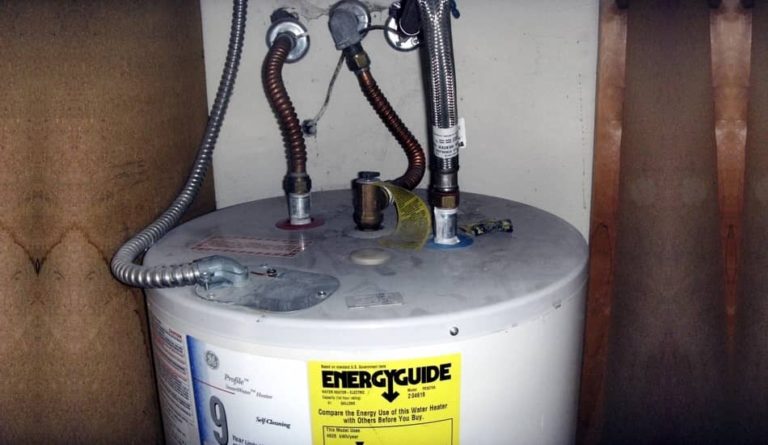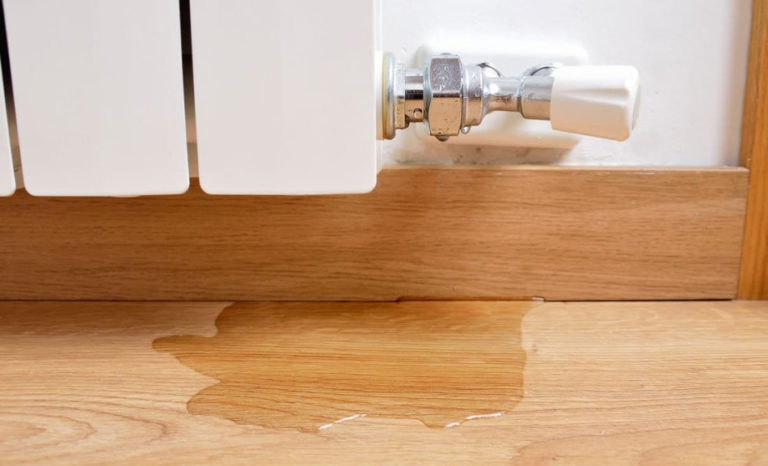Low Voltage or Line Voltage: What Thermostat do You Need?
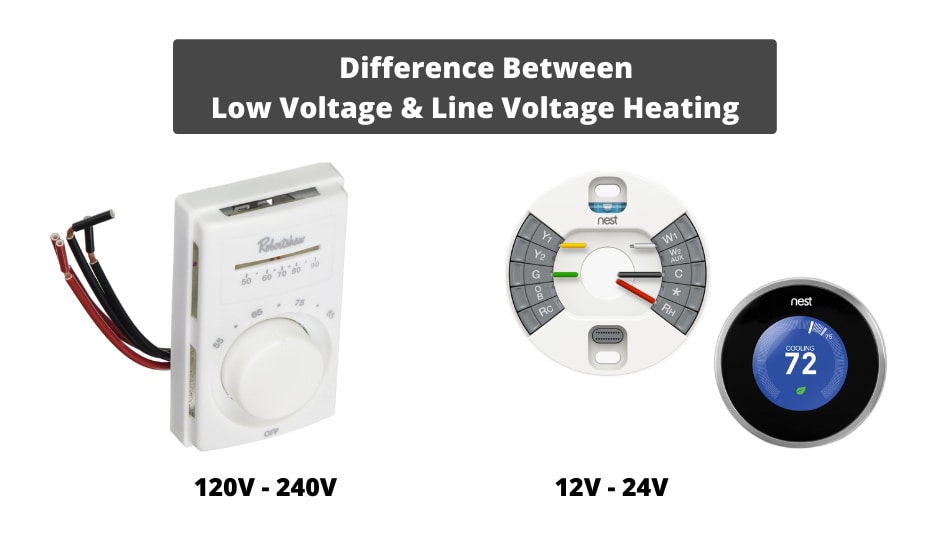
Do you know what is the main difference between low voltage and line (high) voltage thermostats? If not, you are in the right place, because it is very important to understand the benefits of them before purchase and installation. According to energy research, most Americans spend around $112 per month on energy bills! So let’s take a look at which system is best for your home!
Table of Contents
What Is The Difference Between Low Voltage and Line Voltage Thermostat?
What is the Difference Between Low Voltage And Line (High) Voltage Thermostat? Low voltage thermostats operate on 24V of electricity and have very thin wires, like those on telephone jacks, while line voltage thermostats are powered by standard 120V or 240V circuit and have thick wires. The main difference between them is also in their size and the number of wires that they have.
We have two main categories of thermostats, when it comes to the type of heating system:
- Low Voltage heating system
- Line Voltage (High Voltage) heating system
How To Know What Voltage is Your Home Heated?
The vast majority of Americans use natural gas, propane, oil, or wood to heat their homes using different distribution systems. This means that people most likely use a hydronic based heating system, such as radiators or a duct-based system. So if you have one of these two systems, you use Low Voltage thermostats to heat your home.
What Is a Low Voltage Thermostat?
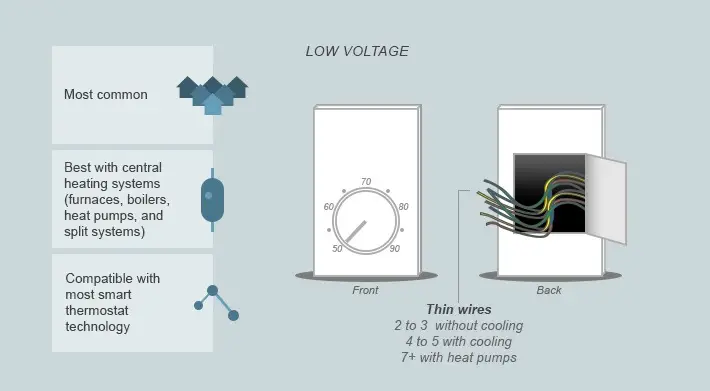
A Low Voltage Thermostats operate on 24 volts of electricity using a step-down transformer that reduces the incoming 120V line voltage to a level between 12V and 24V. Some types of low voltage thermostats can use voltages of 6 volts and it can go up to 30 volts, but 24 volts is the most used voltage. The benefit of these thermostats is that they use less power (around 24 Volts) to operate.
Using low voltage thermostats, you can control all kinds of heating systems from boilers, furnaces, radiant heat, air conditioning, heat pumps, or baseboard heaters. The only disadvantage of these thermostats is that their installation is more difficult unlike line (high) voltage thermostats because they have more wires to connect.
These thermostats are the most common and versatile type of thermostats found in homes. If your house only has one central thermostat that is used for both heating and air conditioning, then you have a Low Voltage System installed in your home.
If you are not sure, look at the wires at the picture!
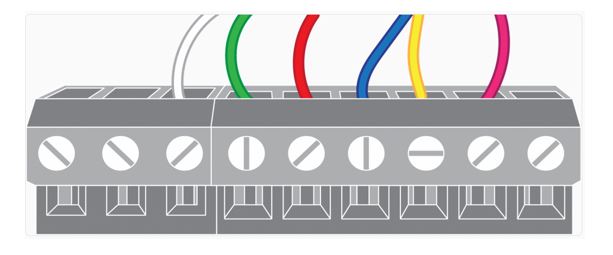
Voltage: 24V (AC)
There is a lot of popular brands of Low Voltage smart thermostat like Nest, Ecobee, and Honeywell which you’ve probably heard of before. Low voltage thermostats include bimetallic mercury, digital/programmable thermostats, and mechanical contact types.
Low Voltage Thermostats
- Thin Wires required
- 2-3 Wires are needed without cooling
- 4-5 Wires are needed with cooling
- 7+ Wires with heat pumps systems
- Step down transformer is required
Usage:
- Conventional forced-air gas furnaces, including standing pilot furnaces and eclectic furnaces.
- Electric forced air heating
- Single-phase or multi-phase heat pumps Gas, oil and electric boilers for radiant heating systems or hot water baseboard heaters
- Electric central air conditioners
What is Low Voltage Wiring?
The circuits and equipment with 50 volts or less are considered low voltage, and wiring that is designed to operate and carry less than 50V is considered low voltage wiring. Most tools or appliances operate at a low voltage between 12V-24V. Step down transformer is required when we want to use low voltage equipment. Because of that, the initial cost is higher and installation can sometimes be more difficult.
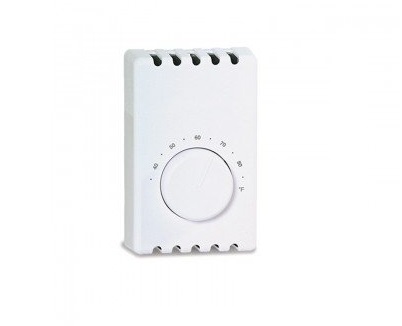
The benefits of low voltage wiring are that you can utilize for a lot of applications such as telephones, Wi-fi networks, and cables. The use of cables in the commercial structure is needed more than ever.
What Is a Line (High) Voltage Thermostat?

A Line Voltage Thermostats are supplied directly from a standard 120V or 240V circuit and are mainly used for electric space heaters, where we include a baseboard heater, direct-wired electric furnace, and other heaters in general.
The Line Voltage thermostats convert the electric current from the house (120V or 240V) into heat. They are powered and operate at 120V-240V on average. Most line voltage thermostats usually have single pole wiring or double pole wiring which depends on features that heater and thermostat have:
Single Pole Thermostat
- Single Current
- Two Wires are connecting the main circuit
- Must disconnect unit to turn off
Double Pole Thermostat
- Operates on separate Currents
- Four wires are connecting the main circuit
- Can be easily turned off at thermostat
Although we said that most Americans use Low Voltage heating systems, there is a mix of heating systems, so we can also find Line (high) Voltage systems in millions of homes around the world. If you have forced-fan heaters or baseboard heaters in your house, then you will definitely need a Line Voltage thermostat.
These thermostats are not as sensitive and precise as most low voltage thermostats, and it may take a temperature change of up to 7 degrees Fahrenheit to make them react. Therefore, higher energy consumption is to be expected in any heating system controlled by these thermostats.
For Line Voltage thermostats, the wires will be connected like this:
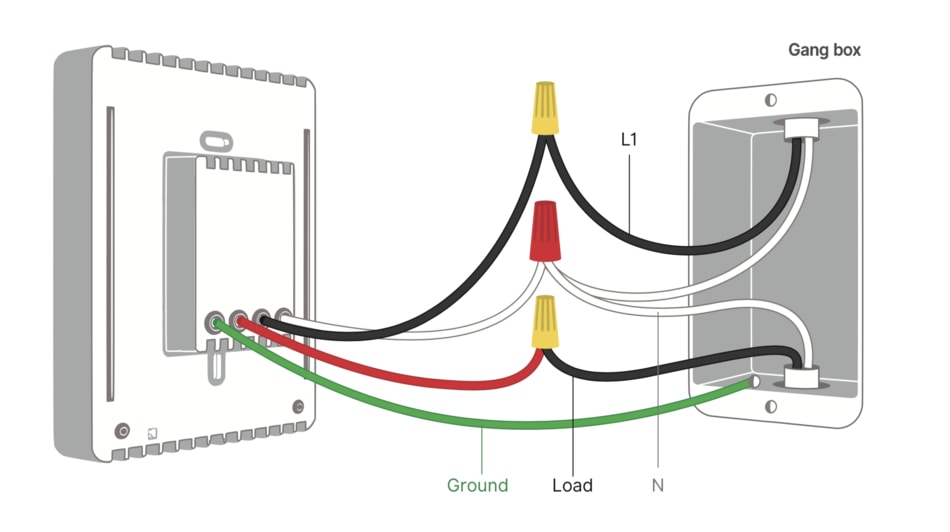
Line Voltage thermostats have between 2 to 4 thick wires as it is shown in the picture.
One way to tell if you have a line thermostat is to look at the wires. The main wires will be quite thick, 1.5 to 2 mm, like those plugged into a wall outlet or light switch. On the other hand, the wires of low voltage thermostats are very thin, like those of doorbells or telephone jacks.
Voltage: 120V or 240V (AC)
Usage:
- Electric baseboard heaters
- Localized heating systems (with line thermostat in each room)
- Oil fired boiler for radiant heating systems or hot water baseboards
What is a Line Voltage Wiring?
When we talk about Line (High) Voltage wiring, it normally refers to the amount of volts that circuit has. The voltage of 120V that is going thru the wire, is considered as line voltage wiring.
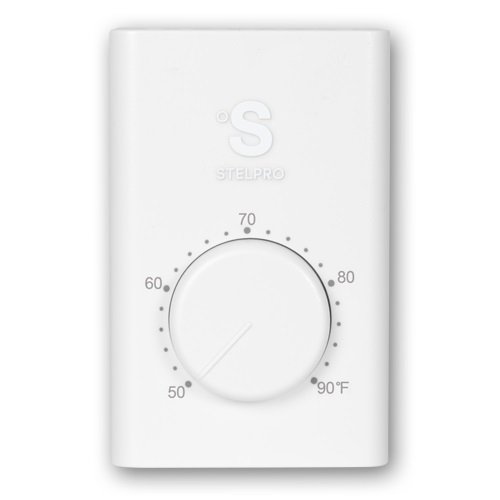
The Line voltage has the standard voltage of 120 volts that you can find in outlets and junction boxes in the Canada and United States. Most house items are designed to be used and plugged directly into a socket, so they are ready to use the power directly from the outlet.
The Pros of Line Voltage Wiring
- Very affordable price and fixtures
- Very easy to install and use
- Line Voltage wiring doesn’t require voltage conversion
- Very Large variety of products on market
Which Thermostat Do I Need?
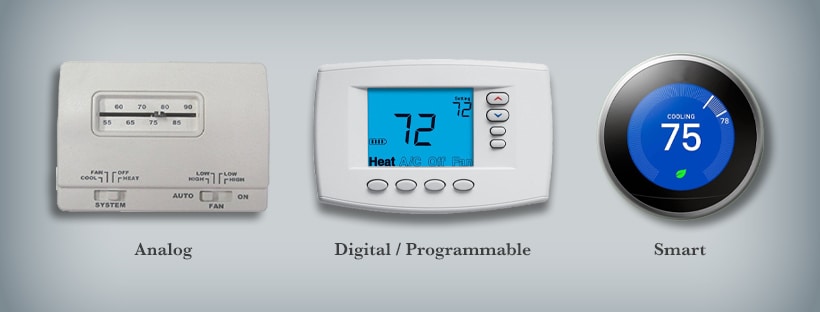
You can choose between furnaces and heaters. But before you decide to choose a thermostat, you need to check what circuit line you have at home. If you have a problem to determine what kind of line you have, it is best to ask a certified technician to do this for you.
NOTE: You need to check what type of circuit you have at home before you consider the type of thermostat you need. Low voltage thermostats can’t work if you have line voltage wiring.
Here you have the Ultimate Guide to Smart Thermostats.
How To Know If My Thermostat is 120V or 240V?
To know at what voltage your thermostat is working, you need to turn off the power and check the wiring. One way is to look into the gang box on your current thermostat. If you have white and black wires, then it is probably 120V. If there are red and black wires, then it is probably 240V. High voltages are dangerous and can be fatal.
Final Thoughts
Now that we have explained the difference between a line voltage and a low voltage heating system, I hope you have a better understanding of how it all works and the benefits of these two systems. Line (high) voltage operates on 120 volts and can be found in our home outlets, while a low voltage system typically operates on 12 or 24 volts and it requires a small transformer to lower the 120 volts too low voltage.
According to statistics, 30% of Canadian households and 10% of American households are using Line (high) Voltage heating systems. Although they are not as economical as low voltage, most people rely on electricity to heat their homes. If you have additional questions, do not hesitate to contact us.


